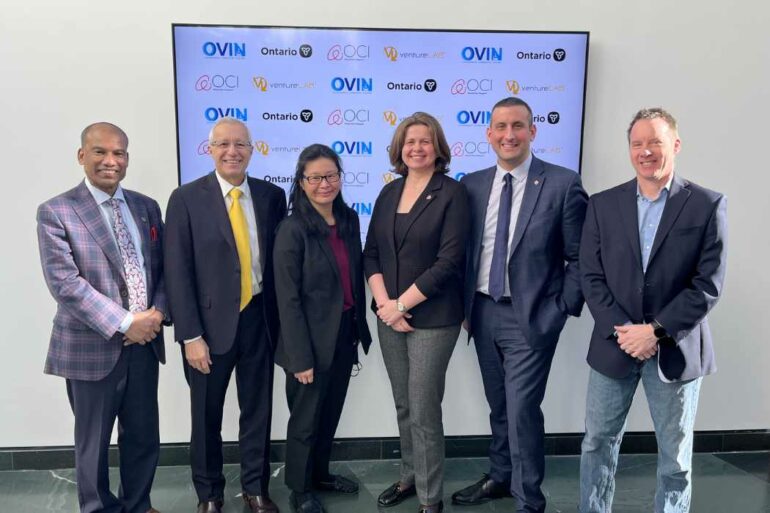The Government of Ontario is committing $19 million CAD to the province’s regional tech development sites (RTDS) to bolster the development and manufacturing of zero-emission, electric vehicles (EVS).
RTDS enable physical sites across Ontario that bring together academic institutions, regional innovation centres, incubators, accelerators, as well as regional and industry sources to support companies in the development, testing, and commercialization of automotive technology and smart mobility solutions. Each RTDS offers access to physical space, tools, and advisory support.
“The cars of the future will be built in Ontario by Ontario workers.”
– Vic Fedeli, Minister of Economic Development
Ontario’s seven RTDS are located in Waterloo, Ottawa, Hamilton, Durham, Windsor-Essex, Toronto, and the newly established Northern RTDS which includes Greater Sudbury, Thunder Bay, Timmins, Temiskaming Shores, Sault Ste. Marie and North Bay.
Made through the Ontario Vehicle Innovation Network (OVIN), the funding went to several tech hubs connected to Ontario’s RTDS: ventureLAB, Communitech, Spark Centre, Invest WindsorEssex, Innovation Factory, Invest Ottawa, and NORCAT (formerly Northern Centre for Advanced Technology).
VentureLab announced last week that it secured $1 million of the collective $19 million investment to establish an automotive-specific stream within its hardware accelerator program, Hardware Catalyst Initiative (HCI).
The funding amounts for each of the remaining six RTDS have not been announced. A spokesperson for OVIN told BetaKit that the rest of the announcements will be made in 2023.
Each regional site focuses on one component of the automotive and smart mobility sector such as hardware, security, data analytics, and others. As VentureLab establishes programming for automotive hardware, Invest WindsorEssex said it specializes in automotive cybersecurity. The Northern RTDS’ focus will be on battery technology and electrification.
Communitech, which is based in Kitchener-Waterloo, offers specialized programming for Ontario startups working on several kinds of automotive solutions such as those specific to mass light vehicles (cars, trucks, vans), heavy-duty vehicles (commercial trucks, buses), and intelligent transportation systems, among others.
The Durham RTDS provides access to equipment, hardware, and software meant to reduce barriers to innovations for early-stage tech companies in the connected and autonomous vehicles sector.
Hamilton-anchored Innovation Factory houses the Centre for Integrated Transportation and Mobility (CITM), which supports companies that are developing solutions related to connected and autonomous vehicles, smart mobility, as well as smart transportation.
Similarly, Invest Ottawa operates a research and development complex dedicated to automotive tech. Named Area X.O, the centre was created to accelerate the safe development, testing, and adoption of smart mobility, autonomy, and connectivity technologies.
RELATED: How electrifying transportation could surge Ontario’s economy
NORCAT connects Ontario’s manufacturing sector with Northern Ontario’s mining and mineral expertise and talent. It is meant to help businesses develop Ontario’s EV supply chain, including initial critical minerals refining, downstream battery cell design and EV powertrain, and manufacturing.
The Ontario government claims that it has committed approximately $46.5 million in investments to help the province build “safer, cleaner, and more efficient transportation.” It builds on the province’s 10-year plan that saw an overall $56.4 million investment in OVIN.
“This investment in the [RTDS] will help to ensure that innovators … across the province have the support they need to bring Ontario-made EV and connected and autonomous vehicle solutions to the world,” said Minister of Economic Development, Job Creation and Trade Vic Fedeli. “The cars of the future will be built in Ontario by Ontario workers,” he added.
Featured image courtesy of the Ontario Vehicle Innovation Network.


